The Pickleball Kitchen Rules: A Zone of Strategy
Pickleball has quickly emerged as one of the most popular paddle sports worldwide, attracting players of all ages and skill levels. However, as with any sport, understanding the nuanced rules is essential for both beginners and seasoned competitors alike. One of the most critical rules is the Pickleball kitchen rule, also known as the non-volley zone. Let’s delve deeper into this rule to grasp its intricacies and understand its significance in the game.
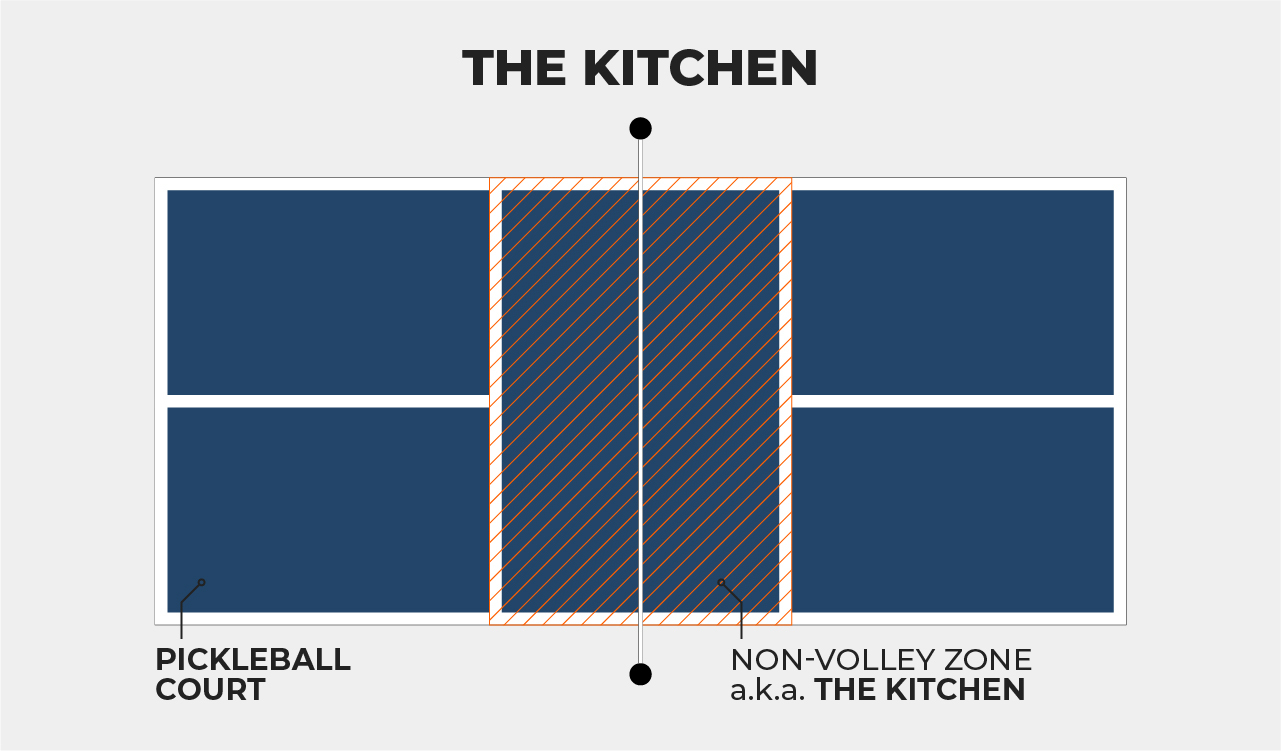
The kitchen rule adds layers of strategy, skill, and safety to pickleball. By enforcing restrictions on how and where players can hit the ball, it encourages finesse and precision over sheer power. Players are required to master the art of soft shots or dinks, elevating the competition and making the game enthralling for both players and spectators. With such specifications in mind, your ability to navigate the kitchen will play a vital role in your overall performance on the court. As we dive deeper, you’ll discover the various dimensions, rules, and common misconceptions surrounding the kitchen that can significantly enhance your pickleball experience.
Understanding the Kitchen in Pickleball
The kitchen, or non-volley zone, is an essential element of pickleball, serving as a designated area that combines strategy, safety, and specific gameplay dynamics. Located just adjacent to the net, this area prevents players from volleying the ball that is, hitting it before it bounces to create a more balanced and exciting game. Flourishing in its rich tactical depth, the kitchen is integral to how matches unfold, providing opportunities for players to exploit their opponents’ weaknesses.
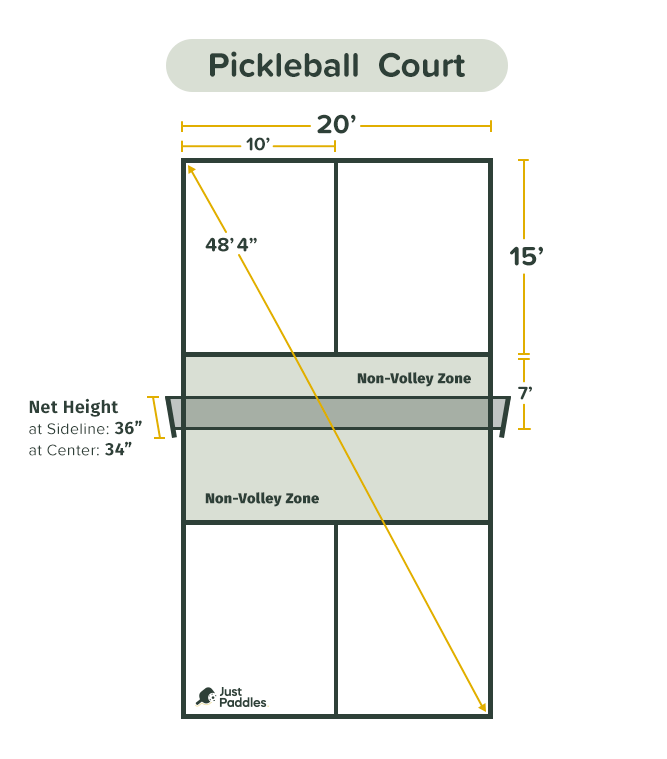
Definition of the Kitchen
At its core, the kitchen is defined as a 7-foot area extending from the net to the baseline on both sides of the court. Unlike traditional tennis courts where aggressive net play is encouraged, pickleball introduces this unique zone to foster strategic play. This innovative rule allows for a more engaging rally and prevents aggressive volleys from dominating matches. The concept encourages players to develop specialized skills such as dinking a soft shot aimed to land within the kitchen without risking a violation of the rules.
Understandably, new players may initially struggle with differentiating between areas of the court. The lack of a solid understanding can lead to frequent errors and faults. Therefore, grasping the basic definition of the kitchen is paramount. This area is not just a physical space; it embodies the game’s philosophy, preserving flow while maintaining intensity.
Dimensions of the Kitchen Area
The dimensions of the kitchen area are quite specific: it stretches 7 feet back from the net and spans across the entire 20-foot width of the court. This clear delineation ensures that players can identify when they are within the kitchen and, thereby, when the rules apply. The kitchen marks the boundary where aggressive volley shots become illegal; any attempt to hit the ball before it bounces in this area results in a fault.
To put this in perspective, imagine a landscape with delineated boundaries. The kitchen serves as a demarcation that separates a free-flowing offensive strategy from the necessity of a more calculated approach. It’s like a dance floor where the music in this case, the ball flows freely, but certain areas demand a refined touch and grace to navigate successfully. The presence of this distinct zone highlights the need for a player to possess not just power but also finesse, control, and anticipation.
Purpose of the Kitchen Rule
The primary purpose of the kitchen rule is to add an element of strategy and safety to the game. By limiting volleying in the area closest to the net, players must refine their skills and rely on tactical plays that involve precise shot selections. The strategy involved in dinking allows players to control the pace of the game, creating openings for potential winning shots.
Moreover, the kitchen rule enhances safety during matches. Without this rule, players could be relentlessly charging the net to hit aggressive smashes, putting themselves and their opponents at higher risk of injury. This suits the community-oriented spirit of pickleball, where fun and safety matter just as much as competition. Players, particularly in double matches, are often in close proximity, and the kitchen helps prevent accidents that could arise from errant smashed balls.
In essence, the kitchen rule embodies a shift in mindset: it emphasizes strategy over sheer force. By encouraging players to develop a variety of skills including dinks and drop shots everyone, regardless of physical strength, can contribute meaningfully to the gameplay.
Significance of the Non-Volley Zone
Understanding the significance of the kitchen or non-volley zone can dramatically change how one approaches and engages in the game. This small section may appear innocuous, but its implications for gameplay are monumental. Firstly, the non-volley zone levels the playing field. While athletes with bountiful power may excel in traditional racket sports, the kitchen invites all players to constantly evolve their skillset. It demands creativity, adaptability, and game sense.
For example, imagine a fierce duel between two powerful opponents, both of whom can typically send the ball scorching back at light-speed. Now, introduce the kitchen zone: suddenly they are required to rely on accuracy, consistently placing their shots in low trajectories, limiting the space their opponents can maneuver. This is where tactics reign supreme; skilled players will create a rhythm that makes it difficult to engage in aggressive shots.
Moreover, the kitchen has become a hallmark of pickleball, distinguishing it from other similar sports like tennis and badminton. Pickleball enthusiasts take pride in these rules, celebrating their rich history that contributes to the sport’s growing popularity. This uniqueness makes the game accessible and captivating, drawing people in to compete and enjoy the energizing experience.
Key of pickleball kitchen rule
To master the kitchen rule, it’s vital to become acquainted with the key rules that govern this essential area of the pickleball court. Understanding these rules allows players to enjoy the game authentically while minimizing faults that could lead to disappointing outcomes.
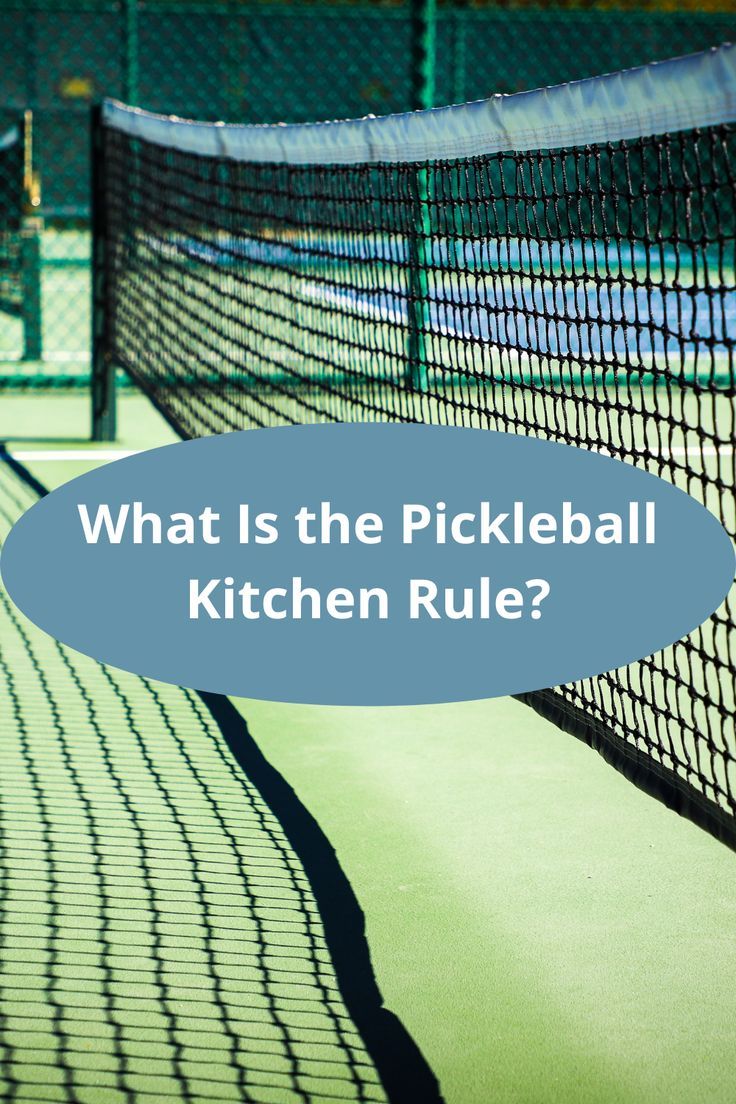
No Volleys Allowed
The most fundamental rule concerning the kitchen is the prohibition against volleying while standing in it. If a player attempts to hit the ball before it bounces while positioned within the kitchen or on the kitchen line, it results in a fault. This rule initiates a degree of caution and forces players to exercise restraint, emphasizing the importance of timing and positioning.
For instance, picture a player eagerly waiting to attack an incoming shot. However, if they fail to recognize their positioning and are caught in the kitchen, the violation could spoil an otherwise well-executed strategy. It demonstrates an essential lesson: awareness of one’s location and the game’s rules is critical for success on the court.
Contact with the Kitchen Line
Another key rule states that players may not make contact with the kitchen line while volleying. This extends to any part of the player’s body, equipment, or attire. Such regulations underline the importance of spatial awareness in pickleball, as it teaches players to maintain a protective distance from the kitchen during high-risk plays.
Think of a tightrope walker taunting gravity; any minor misstep can lead to a fall. In the world of pickleball, if the foot or paddle inadvertently touches the kitchen line while attempting a volley, it’s not just a slight misjudgment it’s a fault. This encapsulates the essence of precision that forms the bedrock of successful pickleball gameplay.
Faults Related to the Kitchen
Faults concerning the kitchen can extend beyond straightforward violations of the volley rule. For instance, if any part of a player’s foot or equipment makes contact with the kitchen area or line during a volley, a fault will be declared. Players must be mindful of how they position themselves while executing shots, as seemingly small interactions can lead to an advantage for their opponent.
Imagine a player striving for victory mentally and physically prepared to send a perfect shot; however, they unintentionally touch the kitchen line during the process. Such faults can derail momentum, leading to frustration during a match. Ultimately, being cognizant of the consequences of kitchen-related actions is vital for maintaining optimal performance.
Momentum and Kitchen Rules
Finally, a player’s momentum can impact their standing concerning the kitchen. If a player’s follow-through from a volley carries them into the kitchen area, it is still considered a fault, regardless of whether the ball has bounced. This highlights the significance of balance, grounding, and awareness in every shot they take.
Consider this: a powerful player makes an aggressive volley, their body instinctively moving forward in excitement, only to stumble into the kitchen. The rules remind them that they must maintain not only control over the ball but also their body. This principle adds yet another layer of complexity to the pickleball experience, compelling players to remain agile and in control.
How to Play from the Kitchen
Navigating the kitchen area successfully can significantly enhance your gameplay experience. Focusing on the following elements can help you maximize your effectiveness in this pivotal zone.
Hitting the Ball After a Bounce
When playing from the kitchen area, it’s crucial to understand that you may only hit the ball after it bounces. Initiating a soft, controlled ground stroke allows players to maintain balance and establish the momentum necessary for the next shot. The kitchen requires players to embrace finesse rather than power this is where the art of dinking comes into play.
By mastering dinking, players learn to direct the ball with precision and create uncomfortable positions for their opponents. Employing dinks minimizes risk while promoting strategic gameplay, keeping the ball low over the net and restricting opponents’ dynamic responses. If executed effectively, a well-placed dink can lead to a favorable return opportunity or spark a series of coordinated shots that culminate in a point.
Techniques to Stay Out of the Kitchen
Proper footwork and timely movements are essential for not only reaching but also safely transitioning into the kitchen line. Enabling small, quick steps and practicing controlled body motions can significantly minimize the risk of accidentally stepping into the non-volley zone. Being prepared for your opponent’s shots can further facilitate your positioning during engagements.
In doubles matches, teamwork also plays a critical role. Communicating with your partner and coordinating movements can bolster your defense around the kitchen. Pairing this teamwork with individual training in agility will elevate your overall performance, allowing you to control the kitchen area effectively.
Strategies for Kitchen Play
As players develop a strategy for playing in the kitchen, they should remain agile, keeping their paddles ready and their knees bent in preparation for incoming shots. Focusing on accuracy through controlled volleys can dictate the rhythm of the game and apply pressure on opponents.
Practicing kitchen movement drills will hone players’ footwork, balance, and coordination skills, delivering the edge they need over opponents. Leveraging drop shots from the baseline provides players with strategic opportunities to transition into the kitchen, capitalizing on spacing to create offense.
Importance of Dinking
Dinking is an essential component of a successful kitchen strategy. It provides players the chance to control the game’s tempo while luring opponents into making mistakes. Mastering techniques such as cross-court dinks and straightaway dinks can significantly elevate a player’s performance.
Players who embrace the art of dinking recognize that it’s not just about winning the point but extending the rally to create tactical openings. Every shot offers unique opportunities to manipulate their opponent’s position, crafting a balance that challenges conventional plays.
Exceptions to the Kitchen Rule
While the kitchen rule is vital, certain exceptions can alter gameplay dynamics. Understanding these exceptions ensures players make informed decisions during matches.
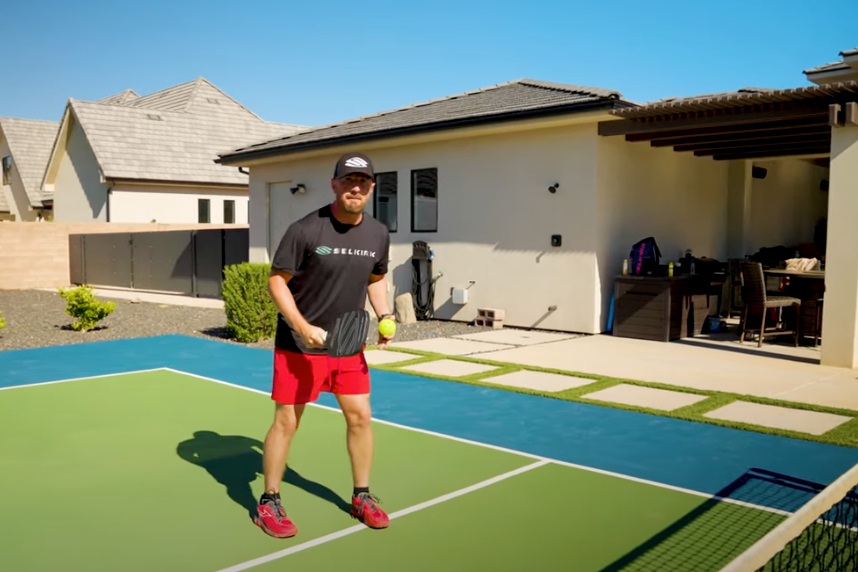
Jumping Over the Kitchen
One key exception is that players are allowed to jump over the kitchen without penalty as long as they are not volleying the ball. However, if a player jumps into the kitchen area while volleying, it results in a fault. The capacity to manage this is crucial, especially for aggressive players who love embracing the net.
Consider players performing daring aerial maneuvers to outsmart their opponents. However, if they err and attempt to volley mid-air while already in the kitchen, they put themselves at risk of losing the point. Having this awareness allows players to maintain an edge while showcasing impressive aerial skills.
Impacts of Opponent’s Shots
Another common query revolves around the consequences of an opponent’s shots in relation to the kitchen. If a ball bounces on your side of the court and strikes an unexpected trajectory or unpredictable spin that then returns over the net, players are permitted to hit it back. The kitchen area does not restrict response options but emphasizes the judicious execution of your next move.
Opportunistic players who can capitalize on deflections and spins can create distinctive gameplay opportunities by tactically positioning themselves in the kitchen while remaining poised and composed.
Communicating with Your Partner
Effective communication in doubles is crucial to avoid unnecessary slips into the kitchen. Players must coordinate their positioning and share cues during plays to maintain solid positioning in the kitchen. A partnership imbued with trust can elevate both players’ confidence, enabling them to navigate the kitchen more efficiently.
Imagine a well-rehearsed dance where each partner knows the rhythm and timing, ensuring no one steps on the other’s toes. Successful pickleball doubles partnerships flourish under such synergy, maintaining their ground while staging offensive plays that capitalize on their opponents’ weaknesses.
Handling Errors in the Kitchen
In the heat of competition, errors often arise when executing shots from the kitchen. Players must remain vigilant, recognizing the times when they may inadvertently step into the zone.
By sharpening their awareness of the kitchen zone and understanding its implications, players can prevent mistakes that could alter the course of a match. Establishing a winning mindset rooted in focus and adaptability better prepares players for kitchen errors and enhances overall performance.
Common Misunderstandings
As with many nuanced rules, players may encounter misconceptions surrounding the kitchen rule. Clarifying these misunderstandings fosters more coherent gameplay and reduces confusion.
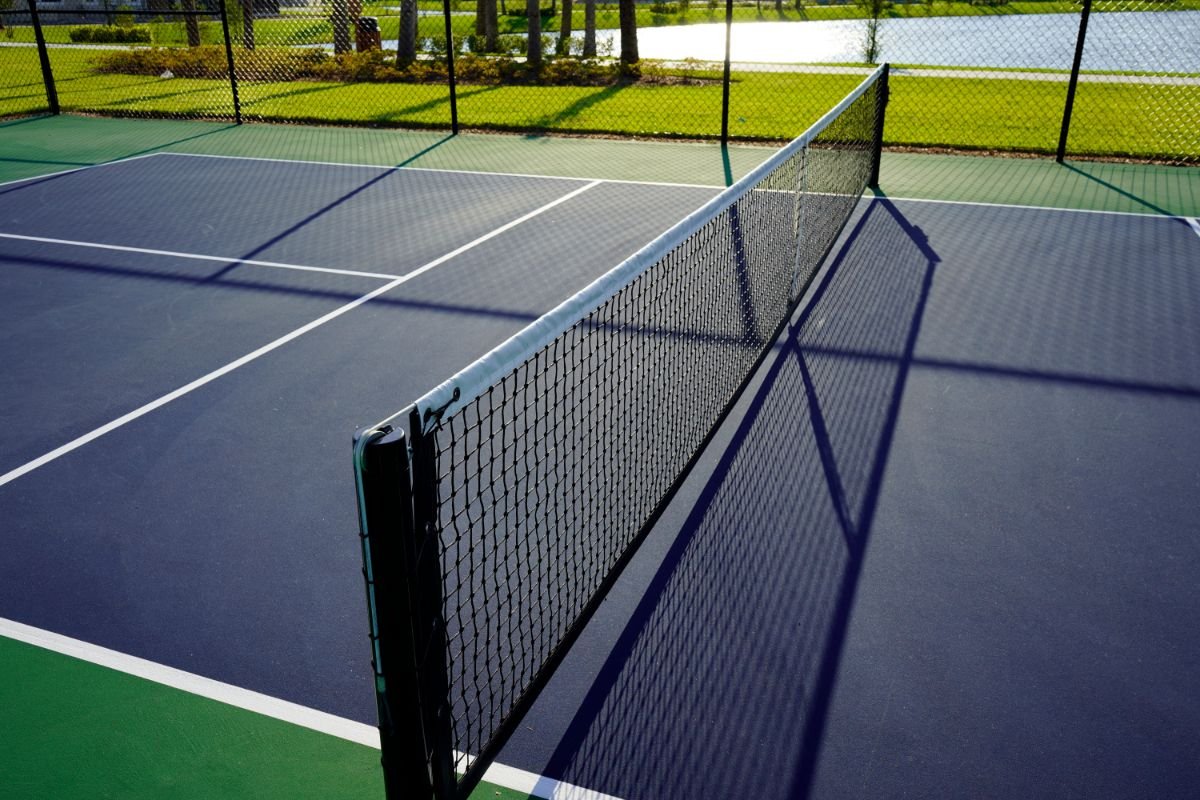
Misconceptions About Entry into the Kitchen
Many new players believe that they cannot enter the kitchen at all. However, players are permitted to enter the kitchen anytime. The only caveat is that they may not volley the ball while in the kitchen or if their feet are in contact with the kitchen line. Thus, mastering this concept is critical for initiating effective play from within the kitchen.
Importance of Foot Placement
Another frequent misunderstanding arises regarding foot placement; players may think they can rely on only some part of the foot touching the kitchen line. However, even minor contact such as a toe grazing the line results in a fault. Players must strive to ensure their feet are positioned outside the kitchen when initiating volleys to maintain gameplay integrity.
Impact of Paddle Position
A commonly overlooked element concerns paddle position within the kitchen. If the paddle touches the kitchen while volleying, it results in a fault, regardless of where the player’s body is located. As players engage in matches, attention must be paid to both their foot and paddle positioning.
Clarifying Kitchen Line Contact
The kitchen line is recognized as part of the kitchen area, meaning players cannot volley the ball while any part of their body or equipment touches the line. This includes not just their feet but any identifiable contact. Understanding this provides a clearer perspective on how to maneuver successfully in and around the kitchen during play.
Common Questions About Kitchen Rules
As a pivotal aspect of pickleball, several frequently asked questions surround the kitchen rules. By addressing these queries, players can further clarify their gameplay and enhance their performance.
What Happens If the Serve Hits the Kitchen?
According to pickleball rules, it is a fault if the serve hits the kitchen line or lands within the kitchen. A proper serve must clear the net and fall into the designated service court, which does not include the kitchen.
Can You Enter the Kitchen Before the Ball Bounces?
Yes, players may enter the kitchen before a ball bounces but must not volley the ball while standing in the kitchen. They can only hit the ball after it has bounced, illustrating the significance of patience and timing within this unique zone.
Jumping Over the Kitchen: What’s Allowed?
Jumping over the kitchen is allowed so long as players do not hit the ball while in the act of volleying. If a player jumps into the kitchen zone during their volley, they will incur a fault. This misconception often confuses enthusiastic players looking to add creativity and flair to their game.
Momentum and Kitchen Rule Violations
Players’ momentum can lead to violations, which is an essential point to understand. If a player’s follow-through carries them into the kitchen after a volley, it is regarded as a fault, regardless of whether the ball has bounced. Awareness of momentum adds complexity to gameplay, requiring players to think strategically.
Conclusion
The kitchen rule is essential to the very foundation of pickleball, guiding gameplay while enhancing safety and fostering strategy. Understanding that the kitchen is more than just a designated space on the court creates a rich tapestry of gameplay opportunities. The intricate nature of the kitchen demands that players hone their skills, enabling everyone regardless of strength to participate meaningfully in the sport.
By adhering to the various rules surrounding the kitchen, players can enjoy a fulfilling and exciting experience on the court. The kitchen serves not only as a space for strategy but also as a canvas for creativity, challenging players to embrace finesse over brute force. As you embark on your pickleball journey, illuminating these rules will empower you to navigate the kitchen adeptly, elevate your performance, and contribute to a positive and spirited gameplay atmosphere. Ultimately, the kitchen embodies a pivotal aspect of what makes pickleball a cherished and beloved sport across communities worldwide.
